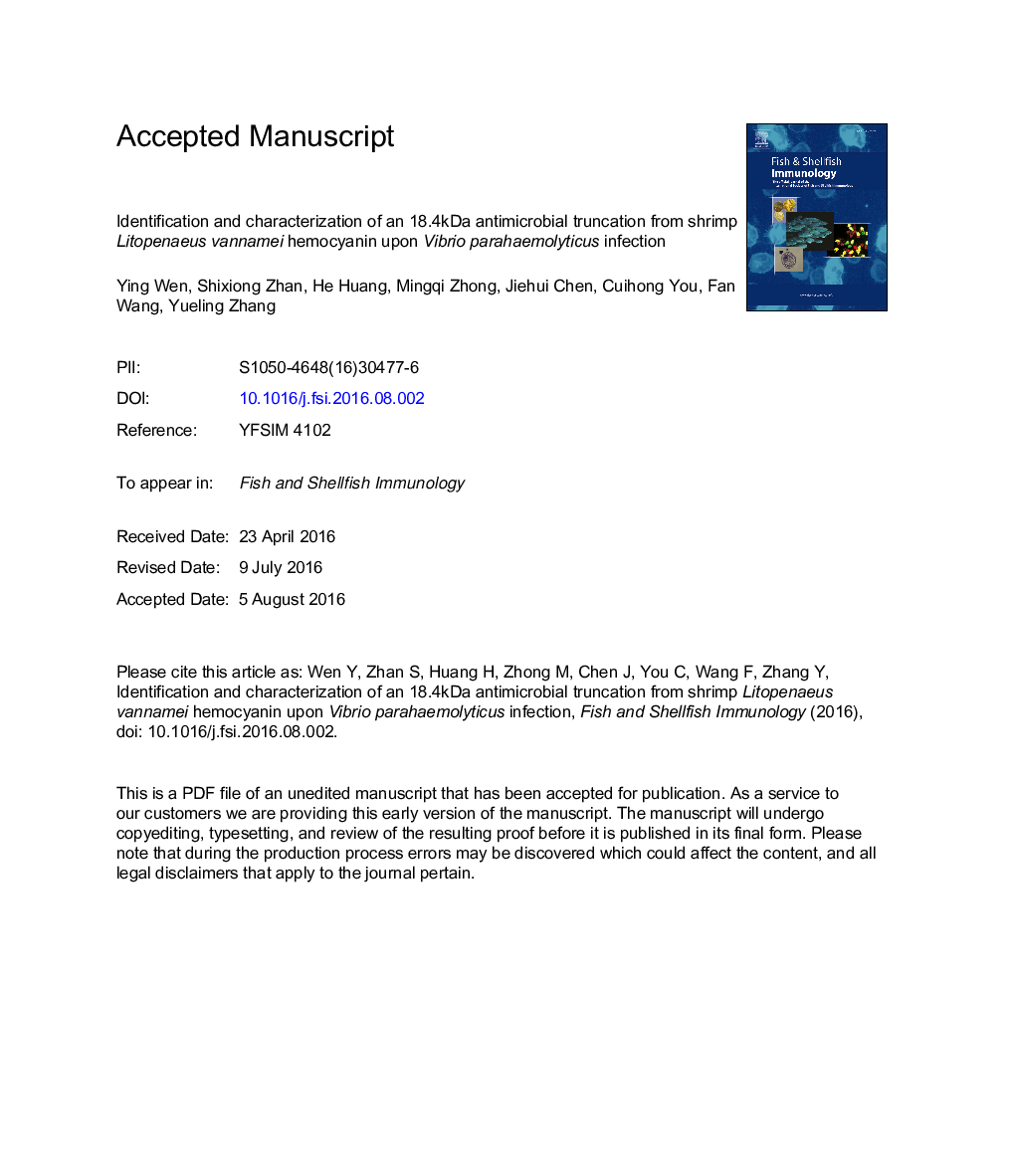| Article ID | Journal | Published Year | Pages | File Type |
|---|---|---|---|---|
| 8499081 | Fish & Shellfish Immunology | 2016 | 31 Pages |
Abstract
Hemocyanin (HMC) is a multifunctional protein which plays many essential roles in invertebrate organism. Recently more and more immune-related functions have been discovered on this protein. Here the shrimp was infected with Vibrio parahaemolyticus and the shrimp sera were analyzed by two-dimensional gel electrophoresis. Totally 15 spots were identified as significantly up-regulated spots and further analyzed by MALDI-TOF/TOF mass spectrometry (MS). Four of them were identified as HMC derived truncations (HMCS1, HMCS3, HMCS4 and HMCS5). The HMCS4 primary sequence was further determined via Edman N terminal sequencing, MALDI-TOF MS and amino acid sequence alignment. The result indicated that the HMCS4 was a 165aa fragment from shrimp HMC small subunit C-terminal. The HMCS4 immunological activities were further analyzed by agglutination experiment and antibacterial assay in vitro. The results showed that the recombinant HMCS4 (rHMCS4) had strong agglutination and antibacterial activities against pathogenic bacteria at the optimum bacteriostasis concentration. In addition, the HMCS4 immunological activities were explored via mortality assay in vivo. The shrimp was challenged with V. parahaemolyticus and rHMCS4 V. parahaemolyticus mixture separately. The shrimp mortality rate was significantly decreased at 96 h post-infection with rHMCS4 injection. Our data showed that shrimp HMC truncation generation upon infection was an effective immune response against invaded pathogens. Moreover, these findings may have some potential applications in shrimp industry.
Related Topics
Life Sciences
Agricultural and Biological Sciences
Aquatic Science
Authors
Ying Wen, Shixiong Zhan, He Huang, Mingqi Zhong, Jiehui Chen, Cuihong You, Fan Wang, Yueling Zhang,
